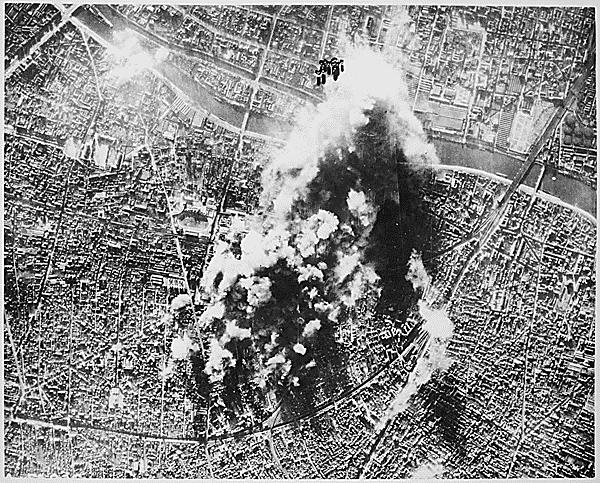December 31, 1943 USAAF 8th Air Force Raid Over Occupied France
Full Title: Photograph taken from USAAF 8th Air Force B-17 Bomber on December 31, 1943 over the CAM Ball-Bearing Plant and Hispano Suiza Aircraft Engine Repair Depot in Paris, France
During World War Two USAAF strategic bombing doctrine rode on the theory of "precision bombing" carried out during the day in spite of ample evidence to the contrary suggesting daylight bombing was a recipe for disaster. The Americans doggedly believed bombers flying at day could not only hit their target but that attempting to fight during the day was preferable because of the increased accuracy daytime bombing offered and the alleged survivability inherent in the heavily armed American bombers.
The USAAF thus turned its workhorse four engine bombers, the B-17and B-24 bombers, into airborne battleships. Each bomber crew comprised at least 10 men, in order to wield the heavy defensive firepower as well as perform the primary bomb delivery task. The B-17 four-engine bomber was a particularly imposing weapon system with its rugged airframe and 10 heavy machineguns spread around the plane with the guns located: in tandem in turrets on top of the fuselage, in the tail, under the plane, and single machine guns on each side of the bomber's main fuselage.
In spite of the USAAF's belief in the heavy bomber flying during the day 1943 was a brutal year for US bomber crews. It was only when American fighter escorts acquired the range to accompany the big four engine bombers to the target that the daylight part of the strategic bombing effort began to bear fruit for the Allies.
Picture Courtesy US National Archives, local identifier no. 208-EX-249A-27


